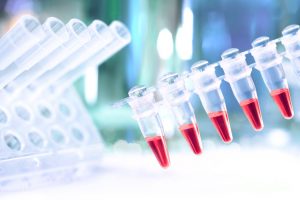HEREDITARY BREAST & OVARIAN CANCER SYNDROME
The BRAC gene responsible for HBOC is present in 1/500 of the general population. It is present more often in Ashkenazi Jews (non-arab jews). It is also more common in families who have a history of breast or ovarian cancer, although most families with a history of these cancers do not have an HBOC gene. A family with male breast cancer or a family member less than 50-years-old with one of those cancers is more likely to have the gene.
IF you have the gene, your chance of breast cancer is increased:
50% by age 50 vs. 2% in the general population
90% by age 70 vs. 8% in the general population
Also, your risk of ovarian cancer is increased to 45% by age 70. Ovarian cancer is fatal 95% of the time. Men with the HBOC gene have an increased risk of male breast cancer and a risk of prostate cancer which is increased to 20%.
If someone in the family has the gene, it means one of her or his parents has the gene. All brothers and sisters of the person having the gene have a 50% chance of having it. Children of someone with the gene have a 50% chance of inheriting the gene.
Women with the gene need their ovaries removed once they are done having children as the risk of death from ovarian cancer is 95%. They may consider whether they want removal of both breasts, with or without reconstruction. If not, they need breast exams 2 to 4 times per year. They also need an MRI and mammograms yearly.
LYNCH SYNDROME
Lynch Syndrome is another hereditary cancer syndrome present in about 1/300-500 people. It is associated with multiple cancers: the two cancers it causes most of the time are colon and endometrial (lining of the uterus) cancers. It is present more often in Eskimos as well as families who have a history of these two cancers.
IF you have the genes (Colaris or My Risk test) , your chance of colon cancer is 82% and your risk of uterine cancer is 70%. Ovarian and stomach cancers are present 13% of the time, and there is an increased risk of certain types of kidney cancer.
If someone in the family has the gene, it means one of her or his parents has the gene. All brothers and sisters of the person having the gene have a 50% chance of having it. Children of someone with the gene have a 50% chance of inheriting the gene.
Women with the gene need their uterus and ovaries removed once they are done having children as the risk of death from ovarian cancer is 95%. People with the syndrome also need regular colonoscopies, every 1-2 years.
TESTING
Myriad’s BRAC and Colaris tests are best because they use a data bank based on their clinical research rather than a public data bank which anyone can alter and is not as accurate. Myriad will also contact your doctor if new research identifies a new mutation that changes the outcome of a test done even years ago.


